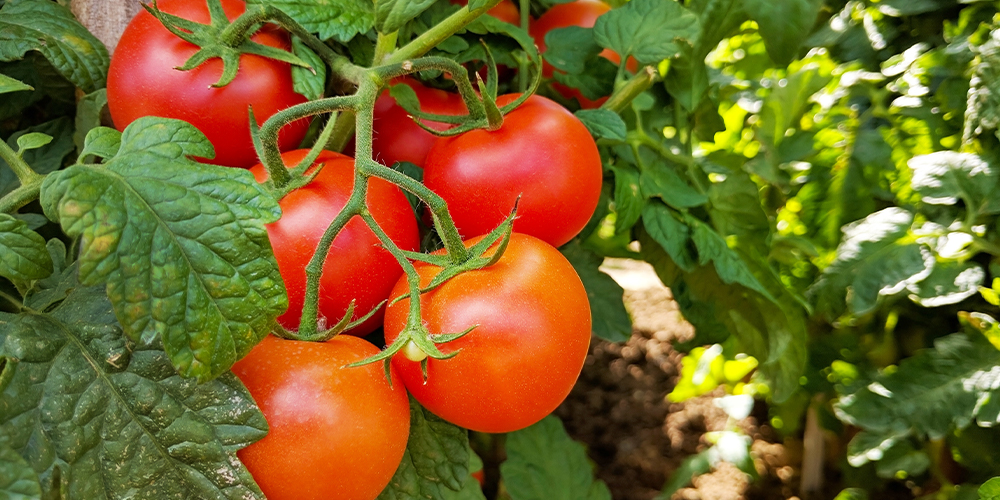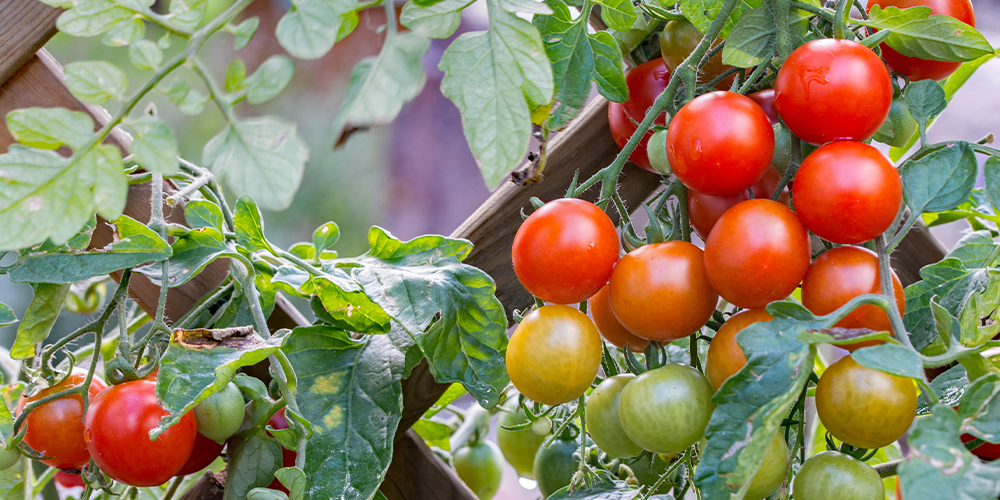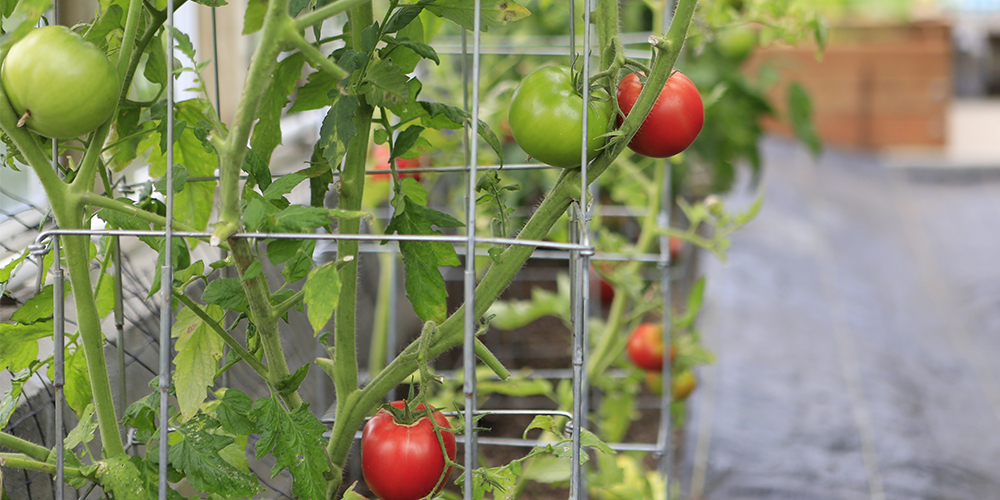
Tomato plants are a super worthwhile gardening project because the amount of harvestable food you get from them is staggering! However, some varieties are a little trickier to grow than others, but the extra effort always pays off. To keep your plants growing steadily and preventing them from rotting, you’ll need to keep them off the ground, and that requires you to “train” your plants to grow in your desired direction. This is an ongoing process, but once you get the hang of it, you’ll be so impressed with the results!
Tomato Training Basics
There are two types of tomato plants: determinate and indeterminate. Determinate tomatoes tend to grow in more of a clumped bush with sturdier stems, and typically only produce one round of harvestable fruit per season. Some determinate plants may benefit from a small stake or cage to help them stay upright, but generally, they’re pretty tough on their own.
Indeterminate varieties are different because they grow like vines, stretching longer and longer, and producing fruit continually until the frost sets in. Indeterminate tomatoes are the ones you definitely need to train and provide structure, to keep those vines from clumping in a pile on the dirt. There are several different kinds of structures you can grow them on, and some are actually quite beautiful, so you’ll enjoy the ornamental value these colourful plants bring to your yard.
You’ll want to begin training your tomato plants when they’re still young””around one month after transplanting them in the ground. As they grow, you need to secure them on your chosen structure. Use a soft, durable material, like thick twine, plant tape, or strips of fabric, but don’t tie them too tight! Tomato stems can be quite delicate, so you’ll want to leave some wiggle room for them.

Training Tomatoes On Stakes
If you want to grow your tomatoes up on single stakes, look for a wooden stake that’s two inches thick, and about seven feet tall. Drive the stake into the ground a bit deeper than one foot. Make sure that the wood isn’t pressure treated or coated with varnish because this can leach chemicals into the soil and contaminate your plants.
As your plant grows, tie it loosely to the stake about every six inches or so. You’ll want to train your plant to grow from one primary stem, which will require you to prune off any suckers that appear. Suckers are small offshoots from the stem, which will eventually develop into larger stems, but if you nip them early, the rest of the plant will grow stronger and faster.

Training Tomatoes On Trellises
Trellises can be lovely additions to the garden, and while there are some particularly gorgeous trellises that you can purchase in-store, it’s also pretty easy to make a DIY one out of wooden stakes and wire. If it’s a large trellis, you can grow your tomato plants with multiple stems. You can achieve this by leaving a few of the early suckers intact, allowing them to develop into fuller stems, and then trimming off all the subsequent suckers so that they don’t hog resources like soil nutrients and water.
Ensure your trellis is well-secured because it could get knocked over from wind or a rainstorm if it’s not sturdy enough. As your plant grows, you can weave it through the trellis, using string to hold new growth in place. Decorative trellises in interesting shapes, like archways, can look really gorgeous with small, indeterminate tomatoes growing along them. They’ll dangle down like little ornaments, changing from green, to yellow, to red.

Using Wire Cages For Training Tomatoes
You can easily make a cylindrical wire cage for tomatoes by buying a 5X5 sheet of wire fencing or mesh, rolling it like a burrito, and sticking it deep into the soil around the plant. Make sure the mesh has large-ish holes in it””about 2 inches wide””so you don’t have too much trouble accessing the plant for pruning and training.
One of the benefits of using a wire cage is that it helps to keep hungry rabbits away. With smaller wire cages, you can train your tomato plant into one stem, but with larger ones, you have the option of growing from multiple stems. Remember to keep plucking off all those extra suckers as it continues to grow!
While there’s a bit more maintenance that goes into training indeterminate tomatoes, the high volume of fruit continually produced throughout the season is a fantastic bonus. Plus, there’s just something so elegant about vining plants! We can’t get enough of them.
Want to start growing and training your own tomato plants at home? Visit us at the greenhouse, or check out our online store to see all the different tomato varieties and supplies we carry. We also have garden tools and garden accessories. We have delivery and curbside pickup options available, so just let us know your preferred method, and we’ll be happy to get that all arranged.















